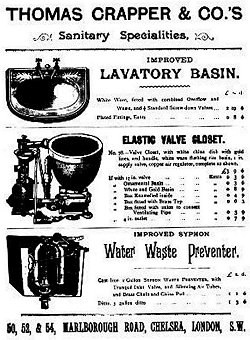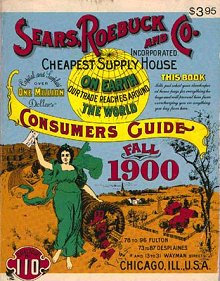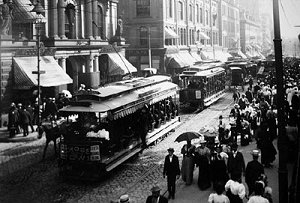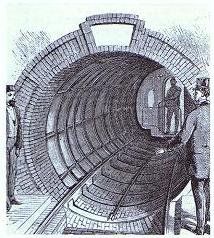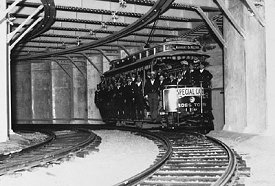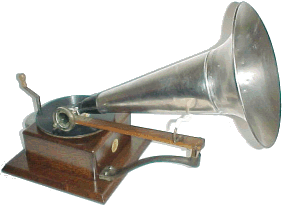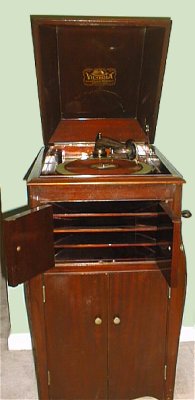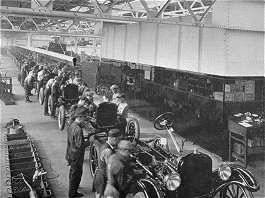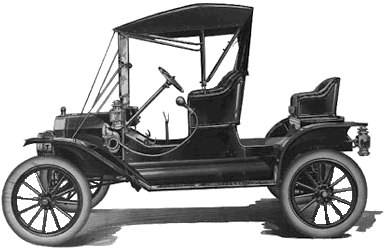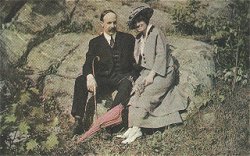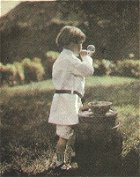Until the late nineteenth century, "effervescent beverages" were used for the relief of intestinal woes, rather than for the recreational quenching of thirst. Until the 1770s, carbonated water only occurred naturally, but a process was created to inject carbon dioxide into plain water in England. The first flavored carbonated drink was ginger ale,
Early soda fountain in Waco, Texas, where Dr. Pepper was formulated.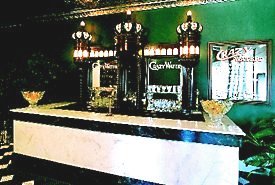 |
which was available in bottles in the 1850s. But it was in Virginia that modern soda pop was born.
Wade Morrison worked at the soda and elixir fountain in a drugstore in mid-Virginia owned by
Charles Pepper, M.D. in the 1870s. He had a penchant for liquid experimentation and a serious crush on the doctor's daughter. According to one story, the latter reportedly did not sit well with the owner, so Morrison was dismissed with a broken heart. He surfaced in Waco, Texas as the owner of
Morrison's Old Corner Drug Store in the 1880s. Morrison's adventurous English pharmacist,
Charles Alderton, had been experimenting with fruit flavorings in an effort to create a drink that was not as heavy as some of the better known mixtures were. One particular elixir combination of his, when mixed with carbonated water, went over well with the customers. Contrary to popular belief, there is no prune juice in the syrup formula. Alderton offered it to his boss, and Morrison decided to market the drink, naming it
Doctor Pepper in honor of his first employer, and possibly the beloved daughter. A beverage chemist and patron of the Waco store,
Robert S. Lazenby of the
Circle "A" Ginger Ale Company, obtained the formula and sold a refined version of it at local soda fountains starting in 1885. Lazenby soon bottled the creation as
Dr. Pepper, with the period after Dr. remaining until the 1950s. It was introduced to the population at large during the 1904 Exposition in St. Louis, and it has remained successful over the last century. It also is "Perfessor" Bill's favorite soft drink!
Some Coca Cola girls of the 1910s and 1920s.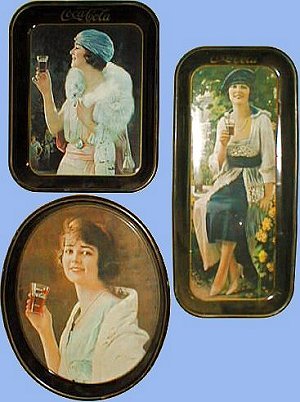 |
It was in 1886, a year after Dr. Pepper debuted, that an Atlanta, Georgia pharmaceutical chemist named
John Pemberton made unlikely history. He had a favorite syrup formula he had concocted while running an apothecary shop in Columbus, Ohio in the 1860s. He brought some into
Jacob's Drug Store in Atlanta and asked the fountain man to mix some with water. Once all present had tasted the pleasant combination, the store agreed to dispense it on a trial basis. His bookkeeper,
Frank Robinson, came up with the name for this "brain tonic" elixir,
Coca Cola, in part (as unconfirmed legend has it) because of the small amount of cocaine allegedly included in the original formula. It is more likely the visual appearance of the two C's in script, and the lyrical nature of the words that contributed to the name. It wasn't until later that year, after the fountain clerk accidentally mixed the syrup with carbonated water instead of the "flat" stuff, that customers started asking for it. Pemberton's health failed quickly the following year, and he sold the formula and his company to wholesale druggist
Asa Candler and his business partners in 1887. By 1891, Candler had acquired control of the entire company, and put his money into advertising its medicinal benefits, rather than its refreshing nature. In 1894,
Joseh A. Biedenham, a candy salesman in Mississippi, started bottling the drink for distribution at picnic events. Sales went over so well that the product was picked up by bottlers throughout the country during the rest of the decade, although not all in the same style of bottles. By the ragtime era, the familiar Coca Cola script label was omnipresent, and the company produced some of the most memorable and colorful advertising of that time. It wasn't until 1915 that the familiar classic bottle shape appeared, created by a professional designer, in response to the many cola imitators that had sprung up. The beverage became a very hot trading commodity during wartime for both World Wars. It was also through the employment of gifted artist
Haddon Sundblom starting in the early 1930s that the familiar modern vision of Santa Claus was embedded in our culture through their advertising. So pause, and refresh yourself. That's the real thing!








 Loading Page. Please Wait...
Loading Page. Please Wait... 

